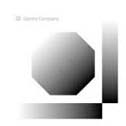What are Gantry Company GrayGraphics file specifications?
All 3D laser carving graphic files are fully linear at 300dpi
resolution and 8-bit 256 grayscale gray levels. File format
is lossless .tif. The actual size
of each graphic is noted with it's ID number.
What kind of material engraves best?
•
When engraving in grayscale 3D laser carving mode our experience is
that maple, cherry, birch, butternut, alder,
acrylic and MDF engrave well.
Walnut, ash and faux marble may perform marginally and oak should be
avoided.
Don't try polycarbonate with a CO2 laser.
•
Use a minimum of 1/4" solid stock. No veneer or plywood. Glue-ups can
cause irregular engraving across glue lines.
•
Keep the surface as free from defects - scratches, dents, tear-outs,
etc. - as possible. Any defects will translate down
into the engraving.
• Try to engrave cross-grain. It will usually produce a smoother cut.
What settings should I use?
•
An engraving depth of 3/32" to 5/32" will give very good relief for the
size of the images ordered from our Website.
The larger the image is the more
engraving depth is required to keep the engraving from 'flattening
out'. Similarly,
a scaled down smaller image will
produce a greater relative engraving depth.
•
Start with a 300dpi engraver setting. Smaller systems (less than 75watt
tubes) may need to use full power and a
slower speed than usual. A second
pass may be required. Increasing the engraver dpi to something greater
than
300dpi may also help if needed. We
use hard maple and a 100 watt system to validate our artwork for a
single pass.
•
Check with your equipment vendor to determine whether your system uses
a bit-depth of 6 or 8 bits. Eight bits cuts
to 256 levels of gray, while 6
bits cuts only 64 levels and may appear more stepped. All Gantry
GrayGraphics artwork
is provided at 256 levels of gray
and is compatible with both 6 and 8 bit systems.
• We suggest testing the linearity of the modulated laser output energy versus the
grayscale input. A white to black
grayscale ramp should engrave as a nice flat
ramp with no flattening out on
either end. You can easily create a test file to do
this or, if you request, we will
be pleased to send you a small file that you can
use - similar to the one shown here.
•
If files using cutting vectors (CV) are rescaled, you may want to
readjust the distance of the cut from the edge of
the engraving to maintain an
approximately 0.006" kerf (the width of the material removed by the
laser). Lens/focal
length is also a factor.
•
Specific engraver settings are best gotten from your equipment vendor
if needed, but usually a bit of trial and error
can help you find the best settings for your system.
How can I clean the engraved piece?
•
After engraving, the piece will have a coating of soot and creosote -
how various vendors implement their exhaust
system will affect how much of
this residue remains. It can be cleaned using water and a toothbrush.
On occasion
it may help to use a wet/dry shop
vacuum cleaner to suck out the remaining 'dirty' water and to dry the
wood faster.
Who are some of the equipment vendors?
•
You can use the Gantry GrayGraphics Eagle Evaluation file to test the
system you already have or, if you are looking
to buy a new system, you can use
it to evaluate the equipment that's out there. Feel free to send it on
to the vendors
that you're interested in and have
them cut a sample for you to compare.
•
Specific equipment needed to do laser carving will vary with each
users' application. Typically it is only the
newer vintage systems and software
that have a good 3D laser carving capability and is best demonstrated by
each vendor individually.